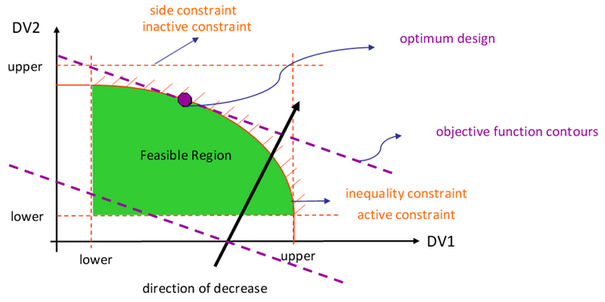In order to formulate a design problem as an optimization problem you must identify
input variables, objective functions, and constraint functions.
When you put input variables, objectives and constraints together, you get the
optimization formulation for a design problem as shown in Table 1.
Refer to Objectives and Constraints for more information.
Table 1.
| Type |
Formula(s) |
Example |
| Objectives |
|
|
| Constraints |
|
|
| Design Space |
|
|
Where:
-
is the vector of system output
responses that are used as objectives.
-
and
is the vector or system
output responses that are used as inequality and equality constraints.
-
is the vector of input
variables.
Some of the results that would be reported after an optimization run include but not
limited to:
- Optimum Design
- The point or design that minimized (maximized) the objective function
and at the same time satisfy all the constraints.
- Violated Constraint
- Constraint that is not satisfied.
- Active Constraint
- Constraint that is satisfied exactly; equality constraints are active
for feasible designs.
- Inactive Constraint
- Constraint that satisfied but not on the bound.
- Feasible Design
- A point or a design that satisfies all the constraints.
- Infeasible Design
- A design that violates one or more constraints.
Figure 1. Design Space Definitions

